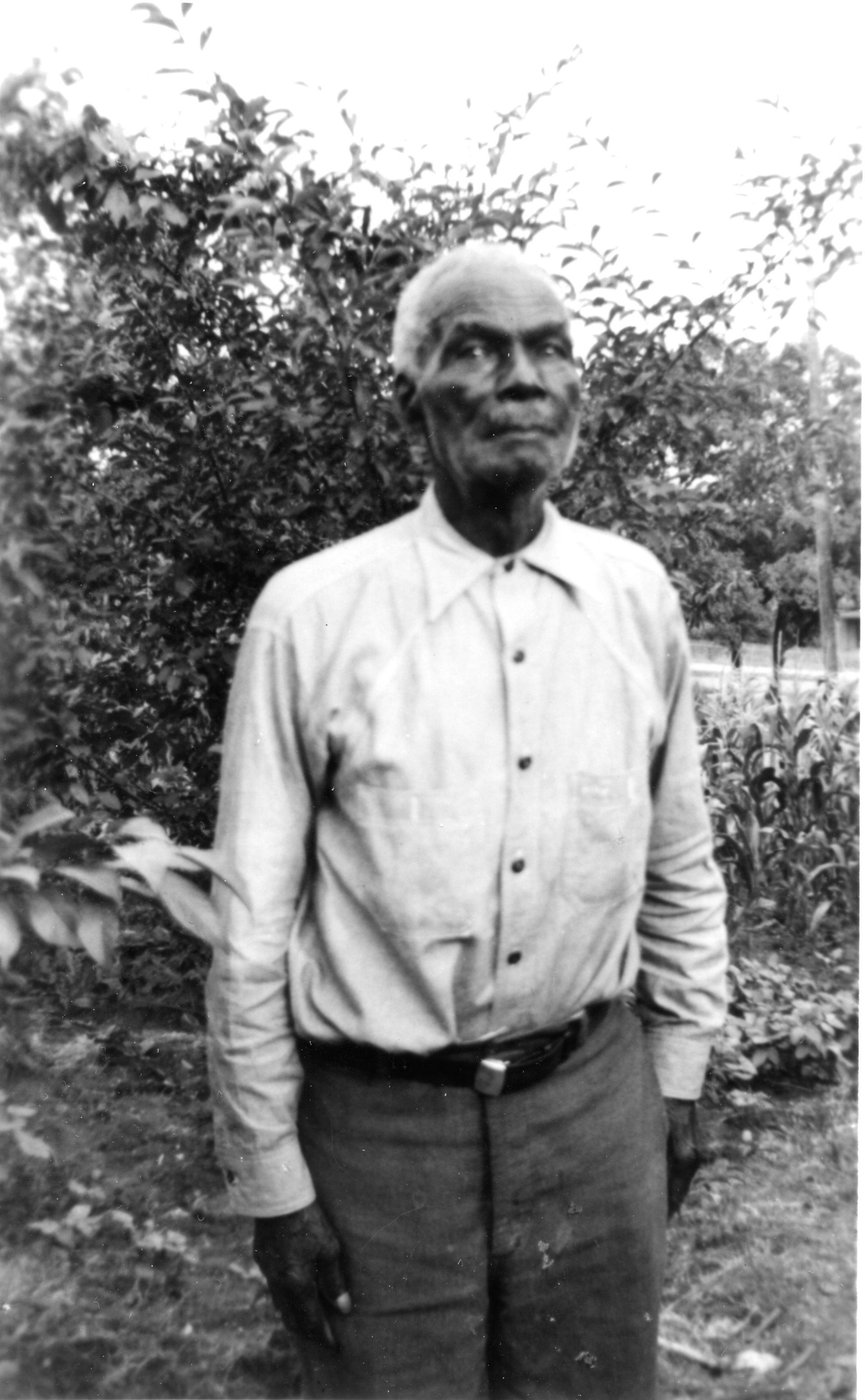Austin Parks and Recreation Department, Oakwood Cemetery Chapel, exhibit “To Emancipate”.
The Communities
St. John Colony
St. John Colony is in Caldwell County on Farm Road 672 just ten miles northeast of Lockhart. The community started in the early 1870s by a group of Black families that came from Webberville with Reverend John Henry Winn to purchase the land. Originally it was called Winn’s Colony but after the St. John Missionary Baptist Church was established in 1873 it changed its name to St. John Colony.
The boundaries are a little nebulous but it included an area of roughly 2,200 acres. At its peak, St. John Colony boasted 100 families, farms, stores, a cotton gin, and a gristmill. The community's historical landscape also included a post office operating under the name Mackiesville from 1890 to the 1920s, with Lewis Mackey serving as the postmaster.

Portrait of formerly enslaved person, George Mackey. Deacon George Mackey was a founder of Mackiesville and the co-founder of the St. John Colony near Lockhart, Texas. Citation: [Mackey, George], Austin History Center, Austin Public Library.
St. John was the name given to the local school district in the 1870s until it was consolidated with the Lockhart schools in the early 1960s. Residents kept a school within the community until public schools were integrated in 1966.
By the 1980s, the community had 40 families and three active churches – St. John Regular Missionary Baptist Church, Zion Union Missionary Baptist Church, and Landmark Missionary Baptist Church. The population in 2000 was estimated at 150, and the community's boundaries extended into neighboring Bastrop County.
Despite changes over time, St. John Colony's three churches continue to thrive, and the community's cemetery, known as St. John or Zion Cemetery, serves as the final resting place for many of its original settlers. Today, the majority of residents are descendants of those early pioneers.
Information provided by the African-American Settlement Survey Travis County, Texas prepared by prepared by Hicks & Company Elizabeth Porterfield, MSHP for Travis County Historical Commission.
This information was supplemented by archivist at the University of North Texas, Michelle Mears, from her book And Grace Will Lead Me Home African American Freedmen Communities of Austin, Texas, 1865-1928.
We recognize that this research is ongoing, drawing extensively from historical documents, archives, and oral histories passed down through generations.
Given the evolving nature of information, it is important to note that details may change. And while inaccuracies may arise, we actively strive to update our records as we acquire new knowledge.
Map provided by Austin Parks and Recreation Department, Oakwood Cemetery Chapel, exhibit “To Emancipate”.
Click on the map to zoom in and explore a specific community.To view a full list of all communities, click the “i” icon in the top-left corner of the map.

